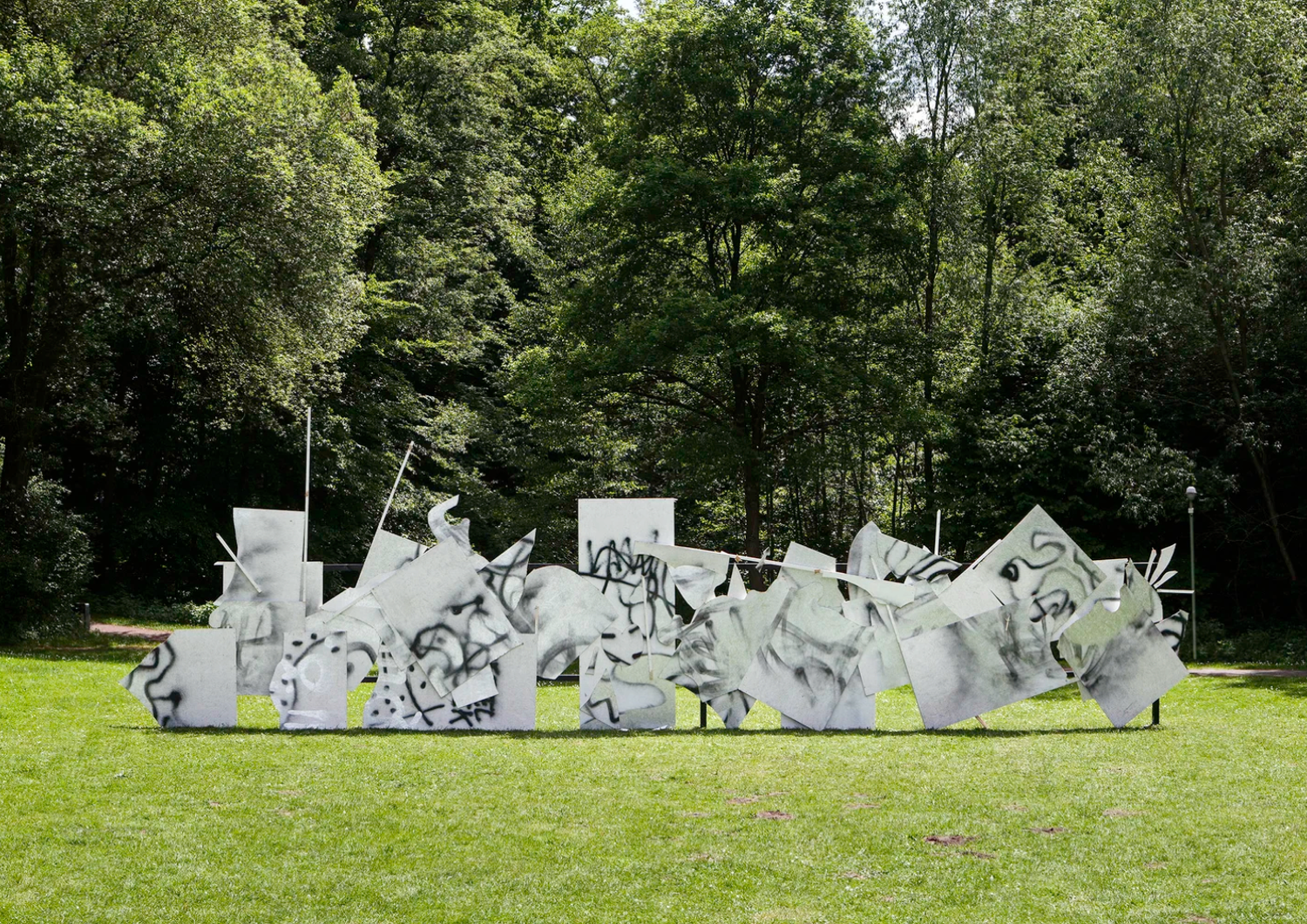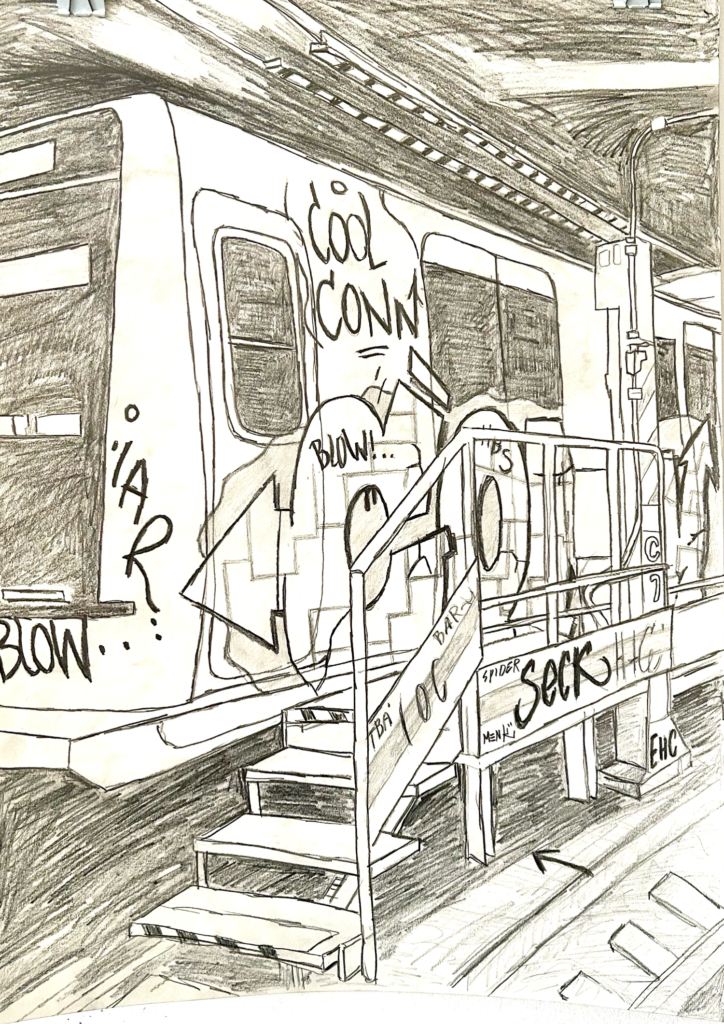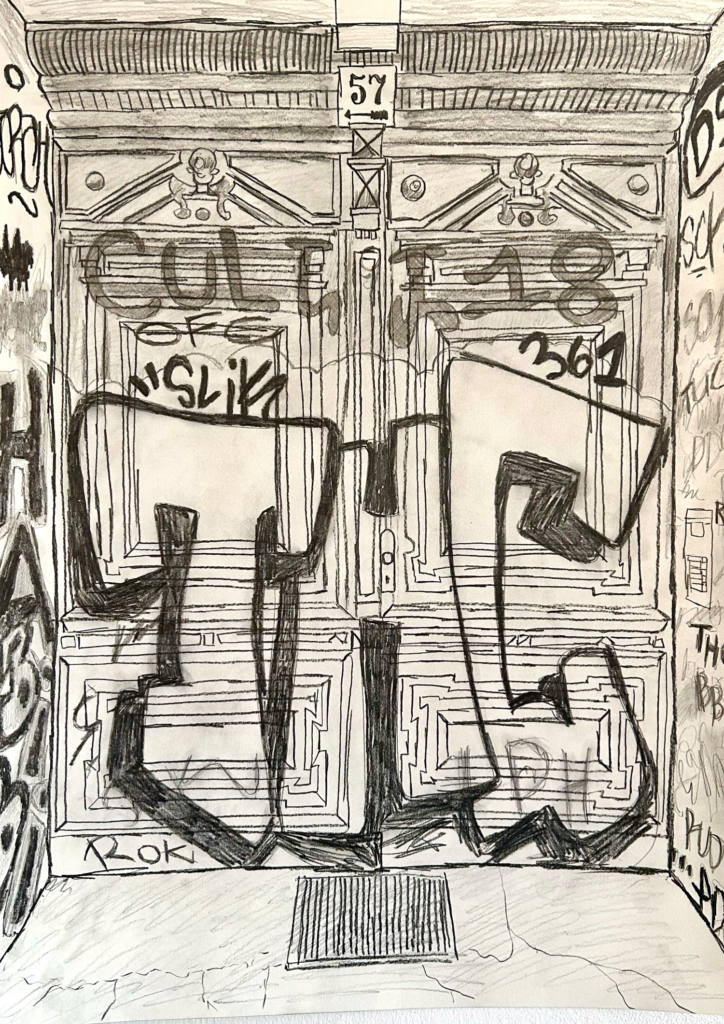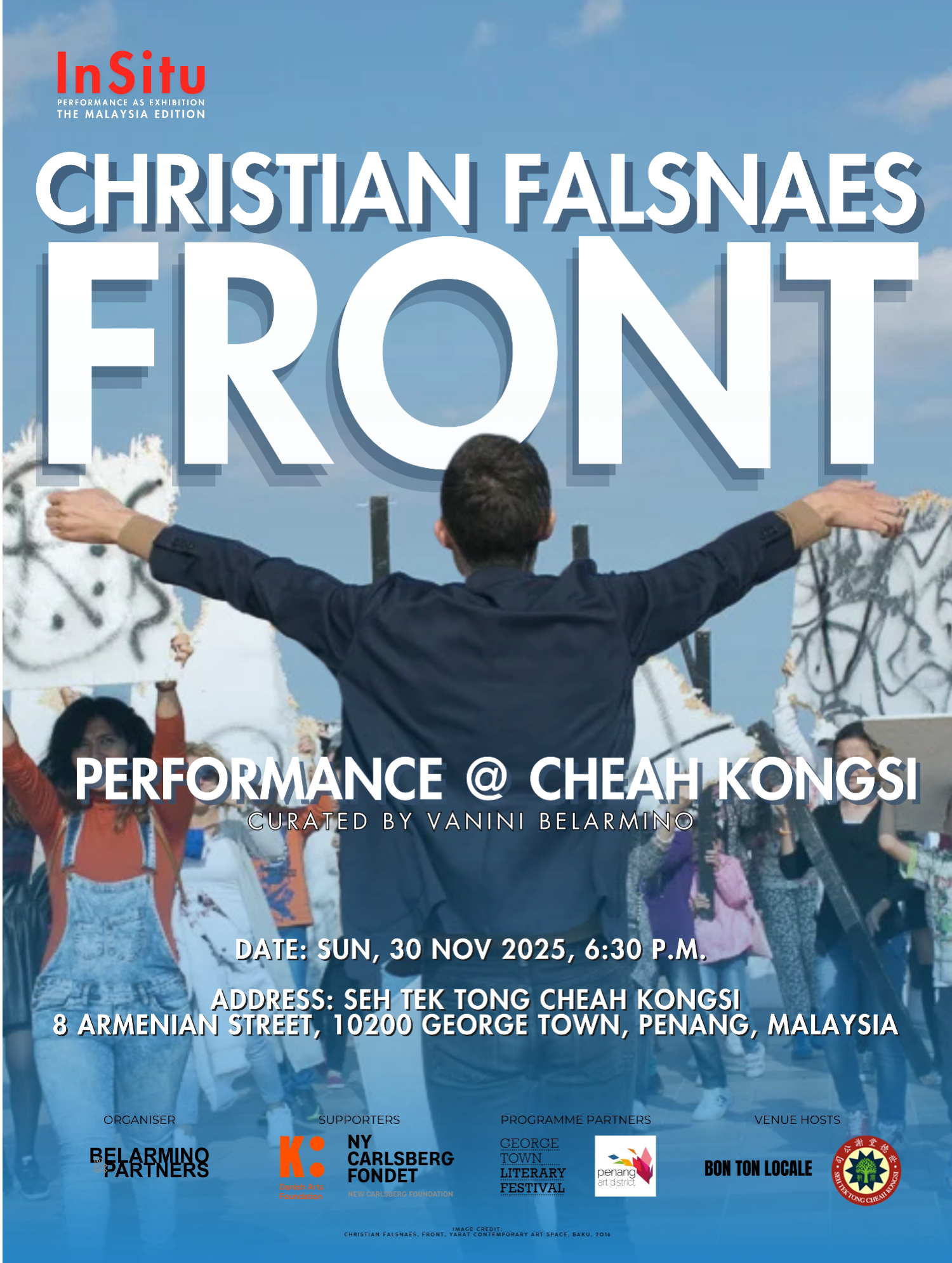Words and interview Vanini Belarmino
Images Vanini Belarmino and Christian Falsnaes
As part of the closing programme for In Situ, Performance as Exhibition – The Malaysian Edition and the George Town Literary Festival, Danish artist Christian Falsnaes presents FRONT, a participatory performance that explores the dynamics of authority and compliance. Renowned for turning audiences into collaborators, Falsnaes investigates how power circulates through collective action—how instruction, obedience, and resistance influence both the process and the outcome of the work.
Set within the historic Cheah Kongsi in George Town, Penang, FRONT unfolds as a ritual that reveals the subtle balance between control and freedom, creation and destruction. In this conversation, curator Vanini Belarmino discusses with the artist the development of the work, the complexities of participation, and the fragile structures of power that the performance brings to light.
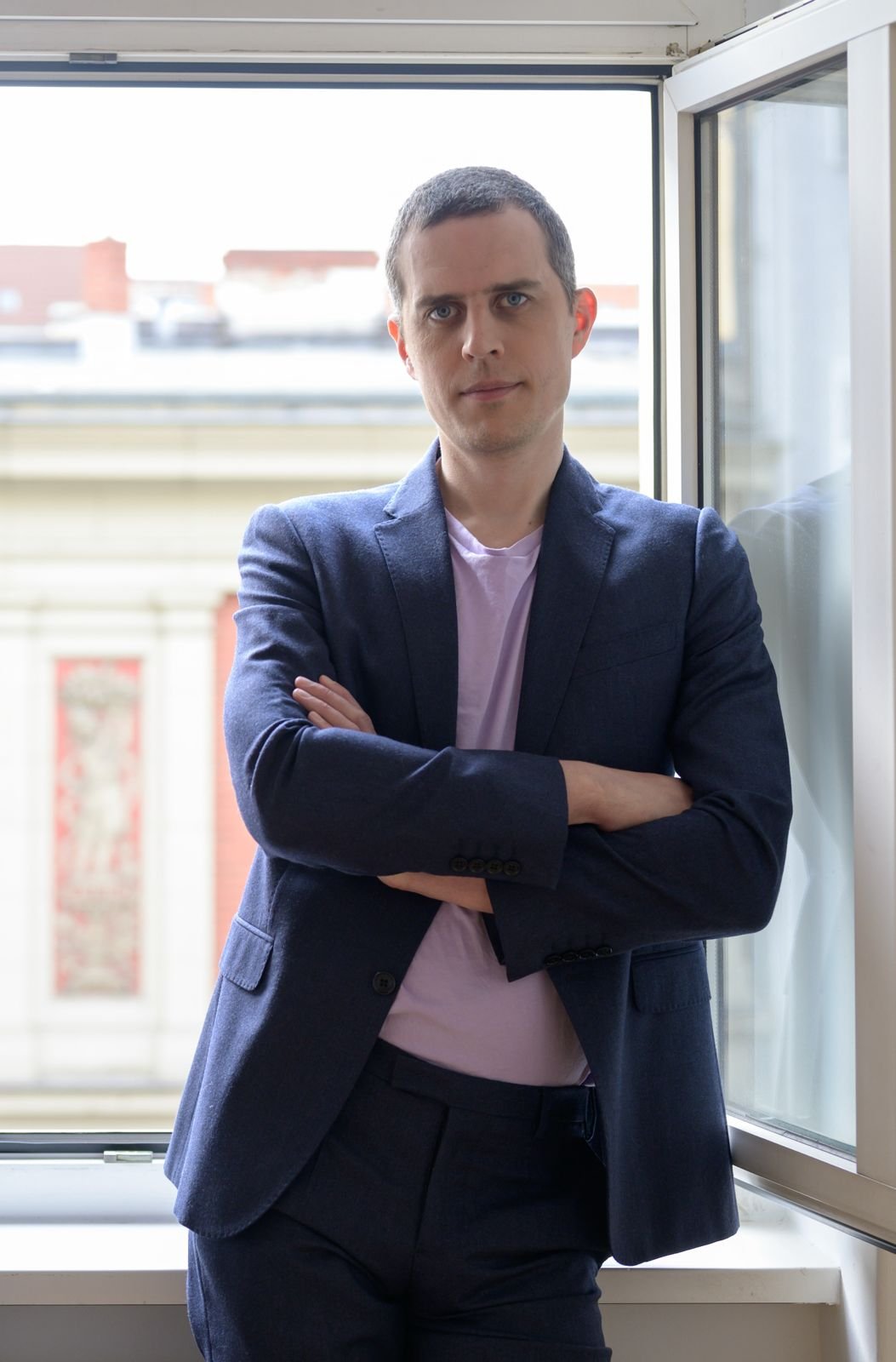

Your practice often focuses on immersive scenarios where performance, film, painting, and installation converge, with audiences becoming active participants. How did the idea for Front emerge, and what drew you to explore this particular situation?
Falsnaes: FRONT is part of a series of works in which I explore the creation of artworks as a collective rather than an individual process. By allowing the audience to become part of this process, the resulting work relates directly to them and their situation, rather than to mine as an artist. The white wall, which serves as the starting point in the work, represents existing structures that can be torn down to make space for something new to emerge.
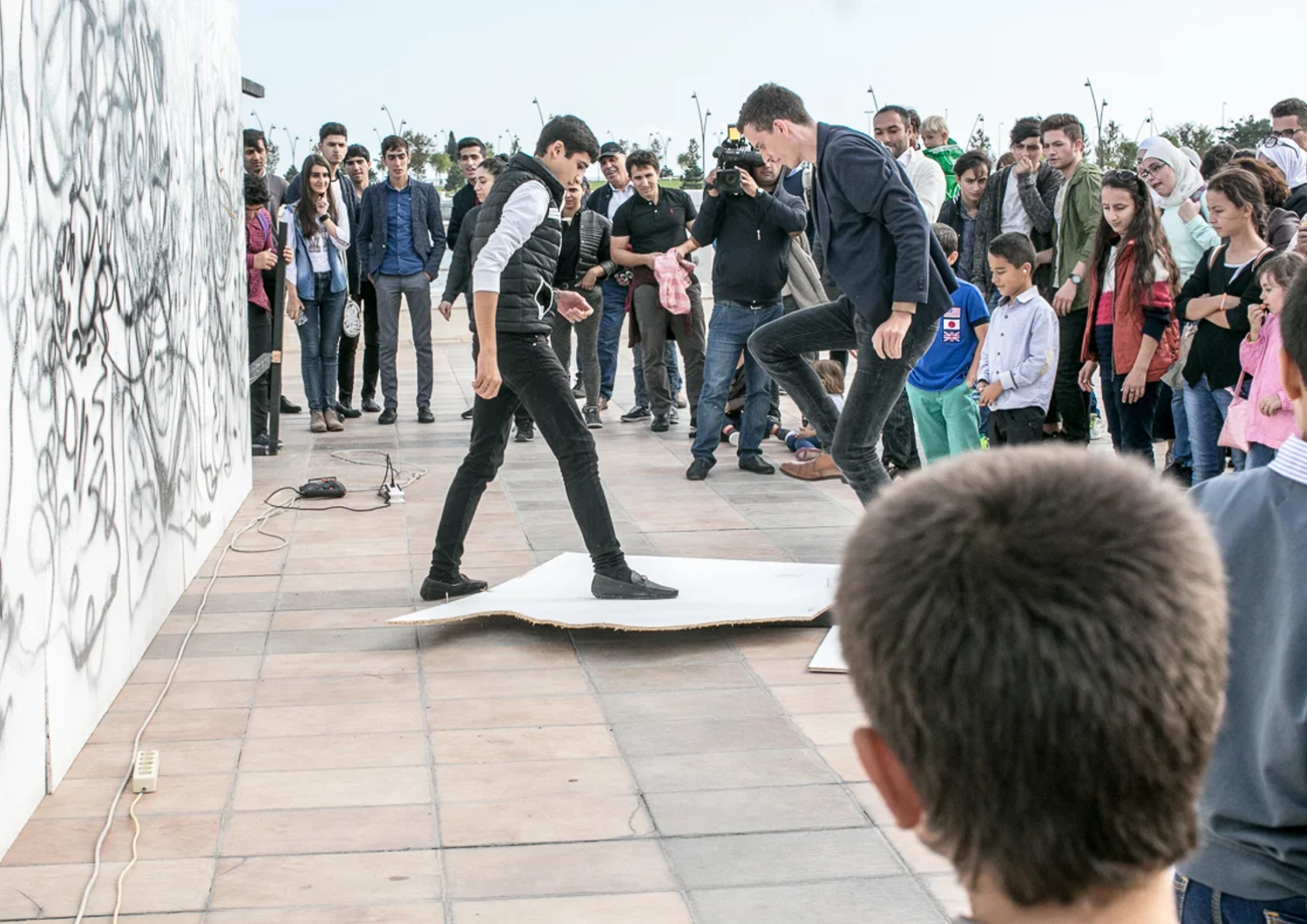

FRONT positions the audience in very specific ways, often challenging social behaviours and power structures. How did you envision audience participation in this work, and what does their involvement reveal to you as an artist? I’m curious how this differs from your other works, such as One or Elixir.
Falsnaes: FRONT is about the creative potential of destruction—how something new can be born from the broken remains of the old. The audience has a clear objective and must work together to achieve it. The resulting artwork requires collective action.
The title suggests multiple layers—frontlines, facades, or positions of visibility and authority. How do these concepts manifest within the performance?
Christian Falsnaes: The final sculpture is literally a front—a large wall with one visible side. But whereas the starting point is a monochrome white square that completely blocks both view and movement, the final result is messy, organic, and full of holes and openings. At the same time, the audience forms a front: a unit moving collectively toward a common goal.
Photos from a visit to Falsnaes’ studio, Berlin, 2023.
Performance often involves both control and unpredictability. What moments in Front have unfolded unexpectedly, and how did you respond?
Falsnaes: I like to reperform FRONT because its multiple iterations make visible the intersection between individual expression and uniformity, which I find so interesting about the work. Each participant makes unpredictable and original contributions, yet the final sculpture always looks similar—just as every branch of a tree is unique, but every tree has a comparable form. The collective frame can contain every unexpected action of the individual.
How many times have you performed the piece, and when setting it up in a specific location, what expectations do you have, and how do you prepare yourself? To what extent do you adapt the score, instructions and performance to a particular locale?
Falsnaes: I have performed FRONT multiple times across Europe, America, and Asia. The physical construction sometimes has to be adapted to the conditions on site, but the score always remains the same.
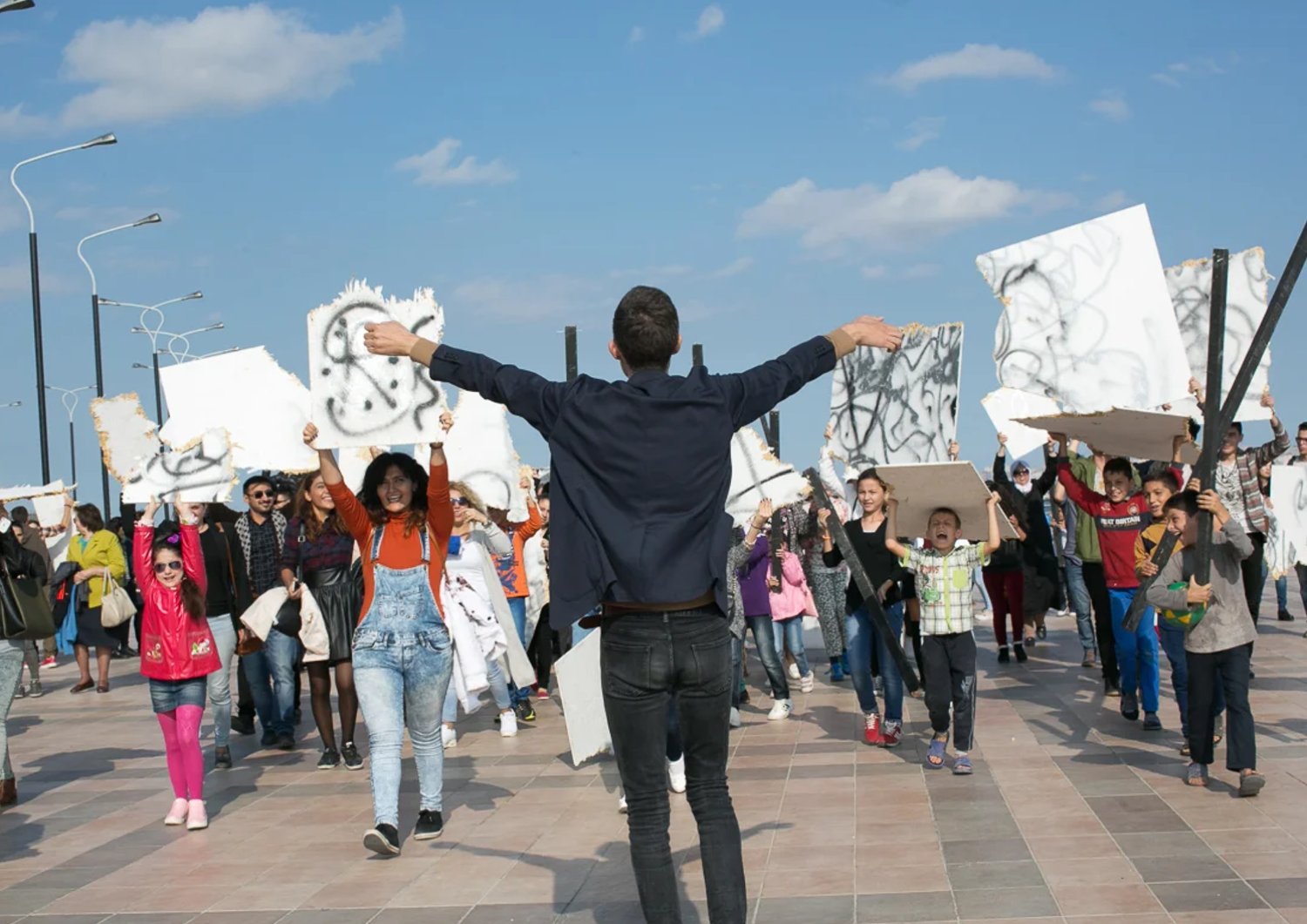

How do you balance your presence as a performer with the agency of the audience? Are there particular strategies you use to guide, provoke, or influence without fully directing their actions?
Falsnaes: I, or any other performer leading the work, must act with conviction and authority. Each audience member can engage with the structure of the performance in their own way, but they must ultimately submit to the collective objective for the work to be realized. Without the active participation and collaboration of the audience, there can be no work.
How do you perceive FRONT’s place in art history, particularly in terms of performance and participatory practices?
Falsnaes: It’s not up to me to determine my place in art history, but with my practice in general, I try to address what I perceive as a blind spot in the reception of participatory and social practices: the role of authority, coercion, and compliance.
Looking ahead, what excites you most about the upcoming presentation of Front in Penang, and what new possibilities does this context open for the work?
Falsnaes: FRONT is always an experiment, and I can never be sure how it will turn out. That uncertainty is part of what makes it exciting to test the formula—especially in a context where I have never performed before. I’m very much looking forward to it. •
In Situ, Performance as Exhibition—Malaysia edition is happening from November 22 to December 31, 2025 in Penang and Kuala Lumpur, Malaysia. Follow Belarmino & Partners on Instagram for more details.
